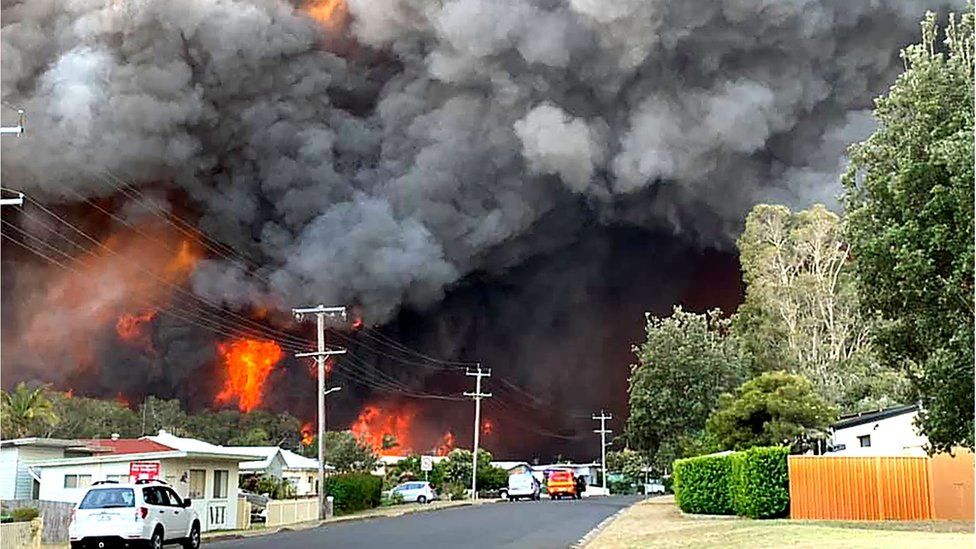Demystifying BAL Reports: A Guide to Recognizing Your Home's Bushfire Threat
Demystifying BAL Reports: A Guide to Recognizing Your Home's Bushfire Threat
Blog Article
Ensuring Bush Fire Security With Appropriate BAL Record Evaluation
In the world of bush fire defense, the meticulous analysis of Bushfire Assault Level (BAL) records stands as a foundation for safeguarding residential properties versus the devastating effect of wildfires. With ecological elements and property characteristics playing significant duties in determining the level of danger, a detailed understanding of BAL ratings becomes imperative.
Recognizing Bushfire Attack Degree (BAL)
In the realm of bushfire security, comprehending the Bushfire Attack Level (BAL) is extremely important for guaranteeing effective reduction methods. BAL is a system used to gauge the potential risk a building might encounter from a bushfire. It thinks about variables such as the kind of plants, the slope of the land, the Fire Threat Index, and the Fire Seriousness Index. Recognizing the BAL ranking of a residential property is important for building policymakers, owners, and contractors to implement proper steps to guard against bushfire risks.

Significance of BAL Record Analysis
A necessary facet in bushfire protection preparation involves the comprehensive analysis of BAL reports to examine the possible risks and determine suitable reduction strategies. BAL reports supply vital details about the prospective influence of bushfires on a building based upon numerous variables such as greenery type, range to potential fire hazards, and incline of the land. Examining these records with accuracy is paramount in developing reliable bushfire protection measures customized to the certain danger profile of a residential or commercial property.
Carrying Out Fire Protection Actions
Applying effective fire protection measures is crucial for safeguarding residential or commercial properties in bushfire-prone locations. One of the primary methods to boost fire defense is by developing defensible space around structures. This includes cleaning combustible plant life, such as dry leaves and branches, within a certain radius of the residential or commercial property. In addition, installing fireproof roof covering products can help in reducing the danger of coal sparking the roof covering throughout a bushfire. Properly preserved screens and seamless gutters are also important to stop particles accumulation that might fuel a fire.
Furthermore, having a properly maintained and appropriate water supply, such as a container or swimming pool, can aid firemens in their efforts to protect the property. It is important to have a clear discharge strategy in position and to make sure that all residents know with the treatments. In addition, having firefighting tools readily available, such as tubes and fire extinguishers, can aid in dealing with tiny place fires prior to they intensify. On the whole, executing a combination of these fire defense procedures can considerably raise the possibilities of securing residential properties throughout bushfire occasions.
Mitigating Dangers in Fire-Prone Areas
To fortify buildings versus bushfire hazards, a calculated focus on mitigating threats in fire-prone locations is vital. Mitigating dangers in fire-prone locations entails a thorough technique that includes various measures to decrease the probability and impact of bushfires. One critical element of risk mitigation is keeping defensible space around properties by clearing combustible plant life, ensuring adequate spacing between structures and trees, and utilizing fire-resistant landscaping methods. In addition, carrying out ember-proofing actions such as installing steel mesh screens on windows and covering roofing cavities can help stop ash assaults and lessen the risk of area fires.
Moreover, building or retrofitting buildings with fireproof materials and ensuring proper maintenance of roofs, gutters, and external cladding can significantly boost the property's strength to bushfires. Developing and exercising a bushfire emergency situation plan with all passengers, consisting of discharge Read Full Article treatments and communication strategies, is also vital in mitigating risks efficiently. By taking on a proactive method to risk reduction in fire-prone areas, property owners can much better safeguard their properties and boost overall bushfire readiness.
Ensuring Residential Property Security and Resilience
Making sure the safety and security and resilience of residential properties in fire-prone areas requires an unfaltering dedication to durable preventative steps and calculated preparation. Property safety and security begins with applying efficient actions to decrease fire threats.
Durability, on the various other hand, entails the capability of a residential property to recover and hold up against from a bushfire. This can be boosted with the installation of coal guards on windows and vents, making certain that entrance points for embers are lessened. Additionally, having a well-thought-out emptying plan and practicing it on a regular basis can considerably enhance property durability. Working together with neighbors and local fire authorities can also bolster the safety and security and resilience of buildings in fire-prone locations. By proactively attending to these elements, building proprietors can better protect their assets and enjoyed ones from the hazard of bushfires.
Conclusion
Finally, ensuring bushfire protection via correct BAL record evaluation is vital for recognizing the degree of risk positioned by bushfires and applying needed fire protection procedures. By reducing risks in fire-prone locations and making sure residential property security and resilience, individuals and communities can much better prepare for and respond to bushfire events. It is important to prioritize fire precaution to safeguard lives and residential property in these risky settings.
In the realm of bush fire protection, the precise evaluation of Bushfire Strike Level Check This Out (BAL) records stands as a foundation for safeguarding residential or commercial properties versus the disastrous influence of wildfires (BAL Report). Comprehending the BAL rating of a residential or commercial property is critical for residential or commercial property policymakers, building contractors, and proprietors to apply proper actions to secure versus bushfire risks

BAL records supply vital details regarding the possible effect of bushfires on a residential or commercial property based on various elements such as plant life type, distance to prospective fire dangers, and slope of the land (BAL Report). In general, applying visit this website a combination of these fire security procedures can dramatically raise the possibilities of securing residential or commercial properties throughout bushfire events
Report this page